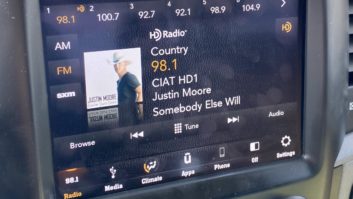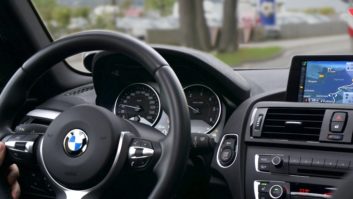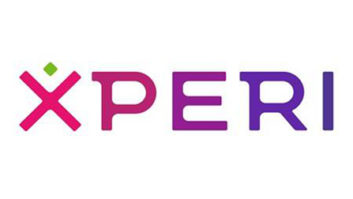Revenue from HD Radio
Apr 1, 2012 1:00 AM, by Kevin McNamara

While pondering the subject for this column, my reaction was probably not unlike the majority of readers. After the initial round of laughter, I thought, “Are you serious?” Now I can hear owners and operators reading this pounding on their desk and yelling, “You idiot, our HD1 ‘Swahili hits’ channel is wildly successful!” Yeah, I get it, calm down.
Being the eternal optimist, however, and loving a good challenge, I thought to myself, why not get a little crazy and offer an idea that could actually make HD Radio relevant, while possibly pumping up the revenue stream.
What are we working with?
As a starting point let’s step back and consider what HD Radio actually brings to the table, in terms of “real world” capabilities.
First, IBOC can only broadcast in one direction. In the network world, we use terms like “unidirectional” or “simplex” to describe when data is restricted to flow in a single direction. Typically this is something addressed in the data link layer of the OSI stack and is implemented for reasons that might include simple command/control functions or to achieve certain security objectives. In the broadcast environment, however, that’s all you have. To make it sound desirable we call it datacasting.
Second, let’s face it; there are some pretty severe bandwidth limitations with HD Radio. OK if we wanted to go pure digital there is about 300kb/s available for streaming; not too shabby. The problem is that we still need that analog main program channel, so now you are left with one, two or three additional channels that are limited to 24-, 32- or 48kb/s, depending on the number of channels and their configuration. In contrast most Internet streaming music services typically use data rates of 32-, 64- or 128kb/s (sometimes higher). Generally, the higher the data rate, the better the quality, depending of course on the specific encoding method used. The good news is that IBOC is a true datacasting system, and as such, the bandwidth requirements do not change with the number of users connected. In comparison, even the slowest wireless mobile technologies can deliver around 3Mb/s (downstream) while newer 4G systems could provide upwards of 300Mb/s (downstream) throughputs.
Last, from a terrestrial coverage perspective, the coverage area is limited to the licensed contour of the station. In reality it is smaller than that covered by the main program channel.
Given this reality, it is unlikely that these channels will ever be able to effectively compete with a streaming radio service delivered, for instance, over a wireless network to an automobile.
Where’s the money? Where are the people?
There is no question that local ad dollars are shifting from traditional into digital media sectors. A recent report by BIA-Kelsey indicates a steady increase in spending for digital media (+13.6 percent), while dollars spent in traditional media decreases (-1.7 percent) over the period from 2010-2015. The fact is that it is not just revenue shifting to digital media, the listeners are as well. According to Arbitron “The weekly online radio audience has doubled every five years since 2001 and the online radio audience now reaches an estimated 57 million people age 12 and older per week.” A recent report from Edison Research indicates that In-car time spent listening is still dominated by terrestrial broadcast but has slipped from 76 percent in 2003 to 62 percent in 2011. That same report also indicates that 84 percent of in-car listeners still use traditional AM/FM radios, but only 2 percent use HD Radio. Pretty much every other type of listening falls between these two groups.
Where are the opportunities?
In looking at the research, one must wonder why there is still such a large disparity between traditional analog and HD Radio listener percentages, in fact the amount of HD Radio listeners are far below those using almost every other type of media, including the cassette player. A recent study from Pew research indicates only 7 percent of people are “very interested” in getting HD Radio. This is pretty much flat over the past few years.
In my humble opinion, what this all seems to indicate is that radio, in general, is quickly loosing relevance with other media choices. Certainly many believe consolidation in the industry has all but destroyed what made radio dominant in the first place: localism. Because a station plays 5 minutes of local news and traffic certain hours each day doesn’t make it local. Radio has allowed itself to no longer be seen as the community station. Even news formats, which have historically ranked high AQH shares (nationally) in the past, have sunk near the bottom of the pile. Again I think this is largely due to a decoupling of the stations presence in the communities within its coverage area.
The crazy part of this is that the one thing that terrestrial radio (including IBOC) can offer over all of the other media platforms is localism; plain and simple.
Consider that, in the past, radio did another thing better than any other media: create hype. It developed morning and afternoon drive shows, built franchises around the personalities and made them bigger than life. There was genuine excitement and support from the community when there was a remote or other event. Now every station is scripting off someone’s “brilliant” formula with shows named “X and Y” (fill in the blank) in the morning. Or how about giving the station a name like Jack or Alice and it’s any wonder why people are leaving?
The proposition
Let’s get back to the fundamentals that worked years ago, serving the community. How about instead of putting some regurgitated music channel on the multicast channels, utilize them for providing public access to the communities within the stations service area. What I am suggesting here is not necessarily selling time to local businesses, rather giving time (and perhaps equipment and resources) to the communities to broadcast local events, particularly high school sports events or anything else that has relevant interest to the residents of that area. Provide expanded local news, traffic and weather tailored specifically to the communities. What does the station get? The right to sell advertisement time to local (and national) businesses. What local business wouldn’t want exclusive access to the very audience the station serves?
I think the secondary benefit is that, if this is done correctly and there is a proper amount of “hype” about this new station, which will ultimately drive sales of new receivers almost instantly as most people will not want to be without the station.
Would I also put this content on my streaming site? Absolutely not…make this content special and exclusive to the local HD Radio audience.
I can see that in certain markets, particularly in areas where high school sports are huge, the additional multicast channels could be used to broadcast different games, sort of like ESPN.
There it is, I am sure there are programmers that could take this idea and improve the concept, but it is a concept that would work if done properly and I think has the potential to generate a significant amount of revenue.
McNamara is president of McNamara Associates, Cape Coral, FL.
On-air light image courtesy of Sandies.
April 2012
Audio over IP for remotes, Radio Kansas rebuilds, the FCC rules on translators and LPFM, and Field Reports on the Inovonics INOmini 632 and Nautel NV40….











